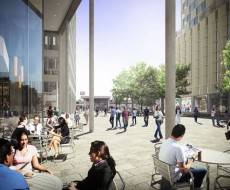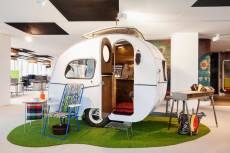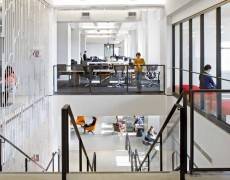April 7, 2014
RICS’ operational headquarters to relocate to Coventry Friargate Development
 The Royal Institute of Chartered Surveyors (RICS) has announced that it will be relocating its Coventry operational headquarters to a new building in the 37 acre sustainable, mixed-use Friargate development in the city. From 2017, RICS plans to lease 36,000 sq. ft. of space in the second building on the site, adjacent to Coventry railway station. The district will showcase cutting edge low carbon building design and regeneration policies by using local businesses throughout the construction phase to provide improved public transport links, affordable housing and public parks. RICS claims that ‘through a connection to an ultra-efficient combined heat and power generator, Friargate will be at the forefront of sustainable commercial accommodation, reducing both RICS’ carbon footprint and operating costs and offering RICS employees a much better work environment and surrounding area than they currently have.’
The Royal Institute of Chartered Surveyors (RICS) has announced that it will be relocating its Coventry operational headquarters to a new building in the 37 acre sustainable, mixed-use Friargate development in the city. From 2017, RICS plans to lease 36,000 sq. ft. of space in the second building on the site, adjacent to Coventry railway station. The district will showcase cutting edge low carbon building design and regeneration policies by using local businesses throughout the construction phase to provide improved public transport links, affordable housing and public parks. RICS claims that ‘through a connection to an ultra-efficient combined heat and power generator, Friargate will be at the forefront of sustainable commercial accommodation, reducing both RICS’ carbon footprint and operating costs and offering RICS employees a much better work environment and surrounding area than they currently have.’

























April 7, 2014
Can building design presage a fall from grace for the world’s tech giants?
by Mark Eltringham • Architecture, Comment, Technology, Workplace design
More →